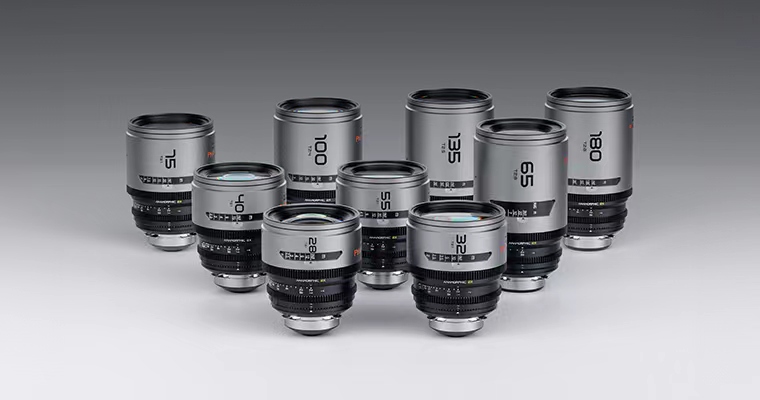4-18-2022
Filters help minimize glare and reflections, enhance color saturation, and more. Different kinds of filters can meet different photography needs and help enhance the final look of an image.
In the age of a wide variety of filters, perhaps that everybody come into contact with the most is beauty filter. But today what we are going to talk about is not beauty filters, but professional camera lens filters. An excellent photographer make friend with light, and lens filters play an important role in managing tricky lighting conditions when shooting. Filters help minimize glare and reflections, enhance color saturation, and more. Different kinds of filters can meet different photography needs and help enhance the final look of an image.
The Benefits of Using Lens Filters
1. Help Protect Your Lens
This kind of filter is just a clear glass which does not affect your images at all. It is like to apply a screen protector on your phone. They are usually affordable and ensure your lens a clean and protected one in normal shooting situations.
2. Improve Glare and Reflections
How often is the situation that you have to shoot a people through a glass like car window in the course of your shooting? A strong glare and reflections ruin the performance of character' s emotions and movements. Some filters can improve this situation.

(Photographed by Craig Whitehead, follow his IG: https://www.instagram.com/sixstreetunder/)
Or even make the reflection clearer. The scene on both sides of the glass form the images that we want.

(Photographed by Paola M Franqui, follow her IG: https://www.instagram.com/monaris_/)
3. Correct or Enhance Colors
By changing the intensity of the light, the filters can boost or alter the colors in your images which is as real as we see. Photographers with faith firmly believe that the problems should be solved when shooting instead of relying on post-production. They are completely different experiences.

4. Extend the Exposure Time
For example, when photographing flowing water or clouds in the sky, long exposures ensure moving subjects to look softer and more smooth.

5. Add special impact to you images
Camera lens filters can add some special impacts to your ordinary images. Have you ever seen question mark, star or love bokeh in images? Also, filters can create more vivid colors according to photographer's hands.


Compared to expensive cameras and lenses, filters are very affordable. But if you don't know what filters you need and how to use them to improve the quality of your images, you're ultimately wasting money. In the following lens guide, we will help you understand the types of filters and their corresponding effects to help you find which ones you need.
Types of Camera Lens Filters
The Basic Filters——Uv and Skylight filters
Before digital cameras were invented, UV filters, like sunscreen, were applied to protect UV-sensitive parts. Skylight filters are mainly used to absorb ultraviolet rays. When shooting outdoors, it can reduce the bluish part of the shadow caused by scattered light in sunlight and maintain the natural color. As technology advances, digital cameras are less sensitive to UV light. Today, UV and skylight filters are mainly used to protect the lens from dust, oil, and knock, ect. The excellent UV and skylight filters can protect lenses while minimizing distortion.

Neutral-density Filter
Neutral-density filter is an optical filter that equally reduces the amount of light entering the lens, without changing the tone of the picture itself. This filter is designed to prevent overexposure, get a shallower depth of field or blurring of moving objects.
Examples of this use include:
· Blurring water motion
· Take pictures of swaying plants and flowers
· Shooting clouds motion
· Street photography - hide pedestrians in crowded places, only shoot landscapes.

Polarizing Filters
Modern digital cameras use a circular polarizer (CPL), which consists of a linear polarizer in the front and a glass in the back. Unwanted polarized light is filtered out by rotating the linear polarizer in front of the CPL.
The role of polarizing filters:
· Eliminate the surface reflections of transparent objects such as water and glass, so that we can capture details behind transparent objects, such as the scenery outside the window, or the rocks and plants under the water.
· Block part of the polarized light in the sky, making the blue sky and white clouds more saturated.
· Reduce the amount of light entering the lens, slow down the shutter speed, and achieve a similar effect to the ND4 degree ND filters.
· Eliminate the reflection on the surface of the object. Let the object reveal the original clarity and color saturation in the bright light environment. Reduce flare and make the detail level of images richer.
· Absorb the stray light reflected by the fog and dust in the atmosphere, making images more pure.

Different effect filters have different roles in improving images, providing photographers with more inspiration and possibilities. There are multiple and diverse filters: such as starburst filter, black mist filter, streak filter, bokeh filter, infrared filters, multivision, center spot or diffusion filters, and day for night filters.
A small investment and simple-to-use equipment can make some changes to your images. A single filter won't work for all shooting scenarios, but we believe that you will have one as least. It's a creative investment.

#DZOFILM #fullframe #primelens #cinelens #lens #filmmaking #filmmaker #newlens #dzofilmnewlens

